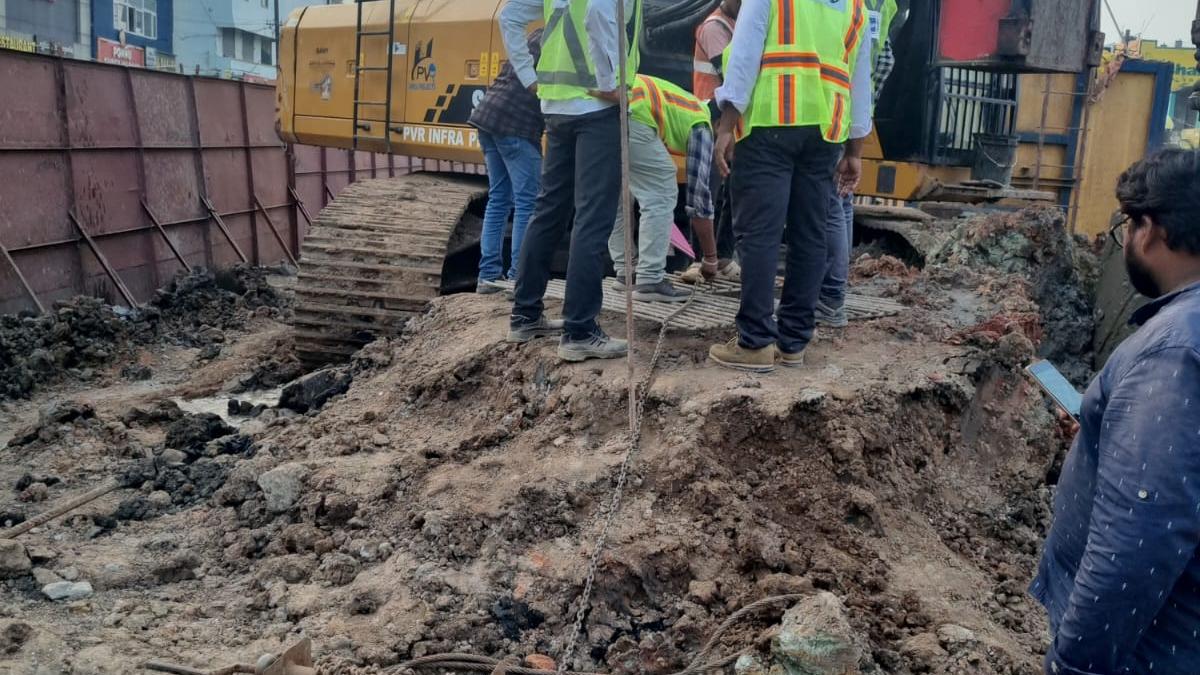
Pillars of elevated Port-Maduravoyal corridor being tested
The Hindu
Testing strength of 115 pillars for Chennai Port-Maduravoyal expressway; construction temporarily halted due to monsoon; project under Bharatmala Pariyojana.
Tests are under way to ascertain the strength of 115 existing pillars of the 21-km long double decker Chennai Port-Maduravoyal elevated expressway.
“We will be using 115 of the 125 pillars. They have been incorporated into the fresh design. This is why testing their strength is important,” a source in the National Highways Authority of India (NHAI) said.
Samples of the core and steel rods are being lifted from each of the pillars. Ultrasonic and destructive tests are being carried out, so that the pillars can be retrofitted according to the new design. It will take two weeks to complete these tests.
Construction over Cooum River has been temporarily halted owing to the Northeast monsoon. “We had to remove temporary structures and pathways needed for the construction, to ensure free flow of rainwater,” an engineer associated with the project said.
The contracting company is also busy constructing the main carriageway and two ramps on the Chennai Port premises, where 700 metres of the expressway would come up. Simultaneously, at Maduravoyal and beyond, piling work is being carried out for a length of 640 metres.
The ₹3,570-crore project is being implemented under the engineering procurement construction mode, as part of the Bharatmala Pariyojana. Land acquisition is under way at Arumbakkam and Koyambedu. The work is being carried out in four packages.
The corridor will help connect the Chennai Port with the Chennai-Bengaluru Highway, and the industrial corridors at Sriperumbudur and Oragadam. The lower tier will carry urban traffic, and help decongest city roads. Entry and exit ramps would come up at 13 locations.

Hampi, the UNESCO-recognised historical site, was the capital of the Vijayanagara empire from 1336 to 1565. Foreign travellers from Persia, Europe and other parts of the world have chronicled the wealth of the place and the unique cultural mores of this kingdom built on the banks of the Tungabhadra river. There are fine descriptions to be found of its temples, farms, markets and trading links, remnants of which one can see in the ruins now. The Literature, architecture of this era continue inspire awe.

Unfurling the zine handed to us at the start of the walk, we use brightly-coloured markers to draw squiggly cables across the page, starting from a sepia-toned vintage photograph of the telegraph office. Iz, who goes by the pronouns they/them, explains, “This building is still standing, though it shut down in 2013,” they say, pointing out that telegraphy, which started in Bengaluru in 1854, was an instrument of colonial power and control. “The British colonised lands via telegraph cables, something known as the All Red Line.”

The festival in Bengaluru is happening at various locations, including ATREE in Jakkur, Bangalore Creative Circus in Yeshwantpur, Courtyard Koota in Kengeri, and Medai the Stage in Koramangala. The festival will also take place in various cities across Karnataka including Tumakuru, Ramanagara, Mandya, Kolar, Chikkaballapura, Hassan, Chitradurga, Davangere, Chamarajanagar and Mysuru.








